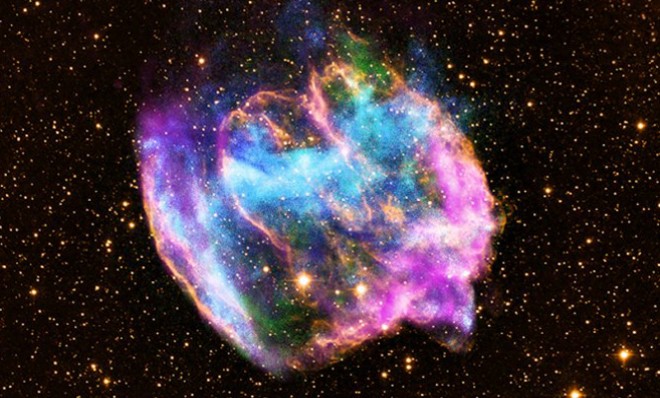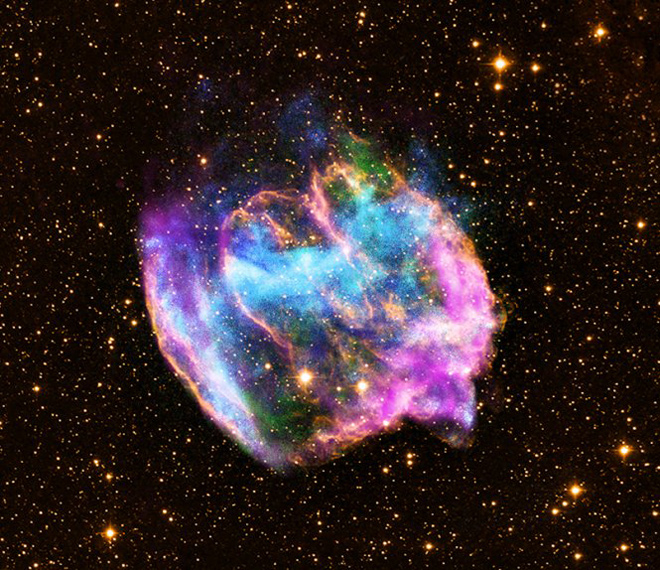PHOTO: This beautiful black hole is the youngest ever discovered
At just 1,000 years old, W49B is thought to be the beginnings of a little-observed phenomenon


What you're looking at isn't exactly a black hole. Actually, it's the light, matter, and radiation spewed forth — and subsequently suspended in space — from a recently exploded star.
NASA scientists, using the Chandra X-ray space telescope, managed to zoom in on this colorful explosion of W49B — an oddly mesmerizing piece of universe that, at just 1,000 years old (at least seen from Earth), is theorized to be the youngest black hole ever spotted in our Milky Way galaxy.
Black holes form when a massive, powerful star reaches the end of its life cycle. After billions of years of existence leave the star's engines sputtering, the dense leftover mass collapses onto itself, throwing excess matter and energy out into the cosmos to create what's called a supernova. After the fireworks show ends, sometimes a dense neutron star is all that's left over. In other, special cases, sometimes what's left behind is a black hole.
The Week
Escape your echo chamber. Get the facts behind the news, plus analysis from multiple perspectives.

Sign up for The Week's Free Newsletters
From our morning news briefing to a weekly Good News Newsletter, get the best of The Week delivered directly to your inbox.
From our morning news briefing to a weekly Good News Newsletter, get the best of The Week delivered directly to your inbox.
As far as we know, black holes are areas of space that are so dense that their immense gravitational pull consumes everything nearby — including light trying to race away. Although black holes themselves are impossible to photograph, hidden at the center of this picture of what is 26,000 light years away is thought to be the genesis of a black hole forming inside a supernova.
That's why the colorful halo scattered around W49B is so "peculiar" to NASA scientists. Whereas other black holes often appear circular and symmetrical, the glittery perimeter of W49B is unusually elongated and elliptical. "It's a bit circumstantial, but we have intriguing evidence the W49B supernova also created a black hole," said co-author Daniel Castro, a researcher from MIT. "If that is the case, we have a rare opportunity to study a supernova responsible for creating a young black hole."
A free daily email with the biggest news stories of the day – and the best features from TheWeek.com

